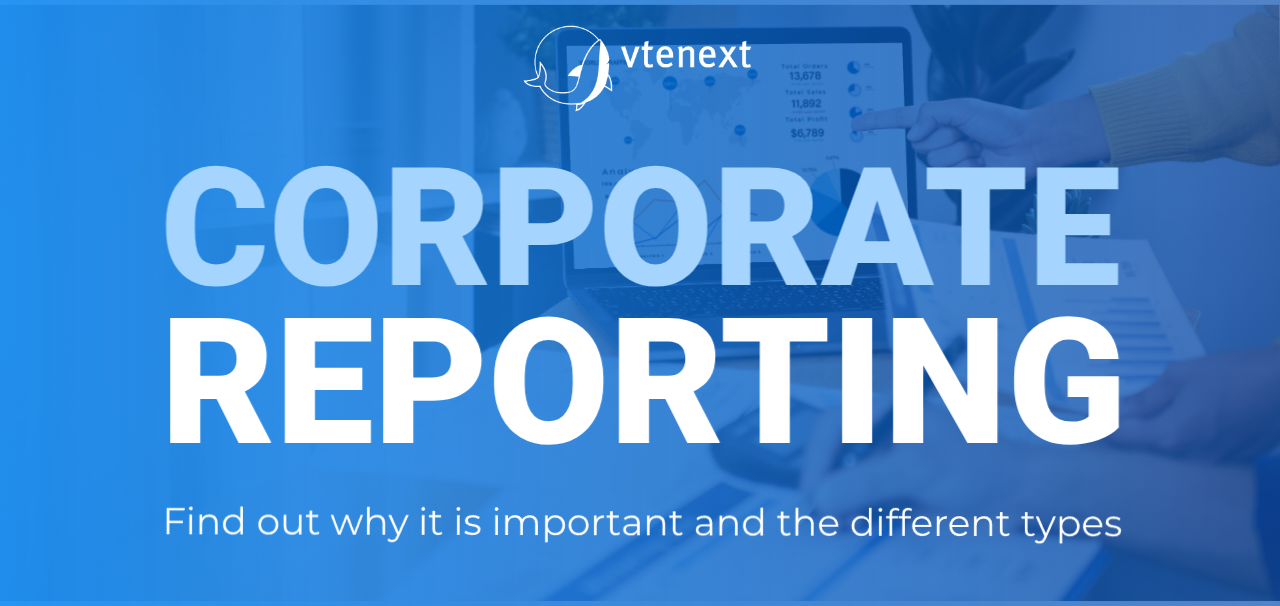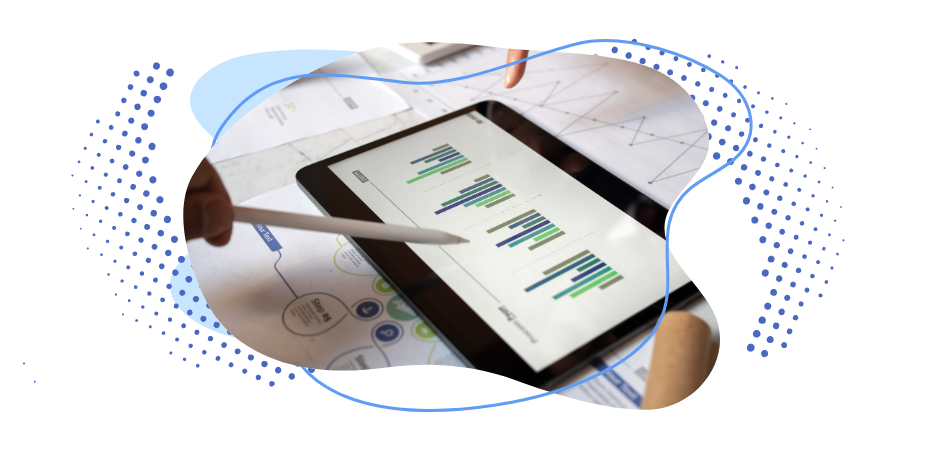Turning data into concrete knowledge and doing it in the right way can be a definite benefit for all companies.
Business reporting is an analysis tool and also a real form of strategic communication that allows the transfer of complex information in a clear, effective and action-oriented way.
Each organisation generates a growing amount of data from different sources and relates to multiple aspects of its business. Without a structured method to collect, interpret and present information in the right way, there is the risk that these data will remain unused, creating confusion. Corporate reporting is about translating numbers and statistics into understandable messages, providing managers, investors and other stakeholders with concrete tools to make informed decisions.
A well-constructed report organizes the data in a narrative format that highlights trends, performance and key issues and that, thanks to intuitive visualizations and targeted language, facilitates internal and external communication, making strategic information accessible even to those without advanced technical skills.
Corporate reporting: what is it?
Corporate reporting is the activity through which an organisation collects, analyses and reports relevant information about its activities, including both financial and non-financial data, going beyond compliance requirements and establishing itself as an essential tool to ensure transparency, accountability and strategic management focused on sustainability and growth.
Unlike traditional financial reporting, which focuses on financial statements and economic performance, modern corporate reporting also encompasses aspects related to governance, social and environmental impact, and human capital management. In addition to internal use, a corporate report allows stakeholders – investors, institutions and business partners – to evaluate the company in a broader and deeper way.
Why is it important?
Trust is a determining factor; the transparency offered by accurate reporting can play a crucial role. Companies that clearly communicate their performance strengthen their reputation and, at the same time, reduce the risk perceived by investors, improving their ability to attract capital. At the same time, effective reporting provides a solid basis for the internal decision-making process, offering in-depth insights into trends, risks, and opportunities for improvement.
In addition, employees and consumers are increasingly aware of the company’s values. Detailed reporting on sustainability, ethics and inclusion initiatives thus becomes a tool to strengthen competitive positioning and attract qualified professionals and customers, in line with the company’s mission.
Types of company reports
Corporate reporting can take different forms depending on the strategic objectives of the company and the information to be communicated. Each type of report responds to specific needs, helping to build a complete picture of the company’s health and its future outlook.
Financial reporting
Financial reporting is essential for evaluating the economic viability of a company and provides a clear picture of its financial position. Through documents such as financial statements, income statements, and cash flow reports, this type of report allows you to analyze revenues, costs and profits, offering a concrete view of the financial health of an organization.
These reports are essential not only for internal management, but also for communication with investors, credit institutions, and regulatory authorities. Their accuracy and transparency affect the confidence of stakeholders and facilitate access to external funding or investment. In addition, integration with business intelligence tools allows for more accurate financial forecasts, improving long-term planning capabilities.
Operational reporting
Operational reporting focuses on the day-to-day management of business activities, monitoring process efficiency and resource allocation. This type of report provides detailed data on aspects such as productivity, stock management, quality of service, and lead times, allowing you to identify any inefficiencies and quickly take action to correct them.
Through advanced analytical tools, operational reporting allows you to transform complex data streams into key performance indicators (KPIs), facilitating the comparison between departments and continuous improvement. For example, in sectors such as manufacturing, logistics and retail, these reports are essential to optimize the supply chain, reduce waste and improve the level of service offered to customers.
Performance reporting
Performance reporting provides an in-depth view of the results achieved compared to the objectives set. Through the analysis of specific KPIs, such as profit margin, customer satisfaction, or employee productivity, this type of reporting allows you to evaluate the success of business strategies and identify areas for improvement.
Thanks to interactive dashboards and customized reports, companies can monitor the progress of their operations in real time, identifying positive trends or critical issues to be addressed. The ability to quickly adapt strategies based on objective data enables sustainable growth and makes business management more data-driven.
How to create a corporate report
Data needs to be transformed into useful information to support strategic and operational decisions. In order for a report to generate real value, it must have some fundamental characteristics that determine its clarity, reliability, and ability to guide business choices.
Clarity and synthesis
Avoiding information overload that could confuse the recipients is crucial for making a report intuitive and easily readable. An effective summary helps highlight the most relevant elements and to guide readers through a clear picture of the situation. Graphical tools such as tables, infographics, and interactive dashboards can make it easier to understand and compare different metrics.
The logical organization of the contents, with well-defined sections and unambiguous language, improves the usability of the report and increases its impact on decision-making. In an increasingly data-intensive environment, the ability to communicate only the information needed, without losing sight of the big picture, represents a strategic advantage.
Accuracy and objectivity
The reliability of a report depends on the accuracy of the data used. Errors, discrepancies or distorted interpretations can compromise the validity of analyses and lead to incorrect decisions. For this reason, it is essential to ensure the quality and consistency of information through reliable sources and rigorous collection and verification methodologies.
A good report should also maintain an impartial approach, relying exclusively on measurable data and avoiding subjective interpretations that could influence readers. Using advanced analytical tools, such as artificial intelligence or machine learning, can help improve the accuracy of forecasts and provide evidence-based guidance.
Appropriate format and structure
The focus on the target audience is another important feature of a well-structured report: a document intended for managers and investors will have a clear summary and strategic vision of the data, with key indicators immediately visible; an operational report, on the other hand, will provide a greater level of detail, allowing in-depth analysis of individual business activities.
The adoption of uniform formatting standards, clear headings and a consistent layout of information makes it easier to read and quickly identify relevant sections. Digitization has also introduced new ways of presenting, such as interactive reports and real-time updates, which make the analysis more dynamic and adaptable to business needs.
Relevance to target audience
Each report must meet specific objectives and include only information that is really useful to the recipients. The inclusion of irrelevant or excessively technical data could make the document confusing or difficult to interpret. It is therefore essential to select relevant metrics and indicators, customizing the reporting according to the needs of the stakeholders involved.
A good report, in addition to providing numbers, tells a story through data, highlighting trends, correlations, and possible future scenarios. This approach improves understanding and enables decision-makers to turn analysis into concrete action.
Technological innovation has transformed corporate reporting from a simple monitoring tool to a dynamic and interactive system, capable of providing advanced real-time analysis. Advanced reporting solutions are integrated into CRM such as vtenext and provide a digital environment where data flows seamlessly between different business departments. This synergy allows a unified view of organizational performance, eliminating discrepancies between the various systems and ensuring greater consistency of information.

